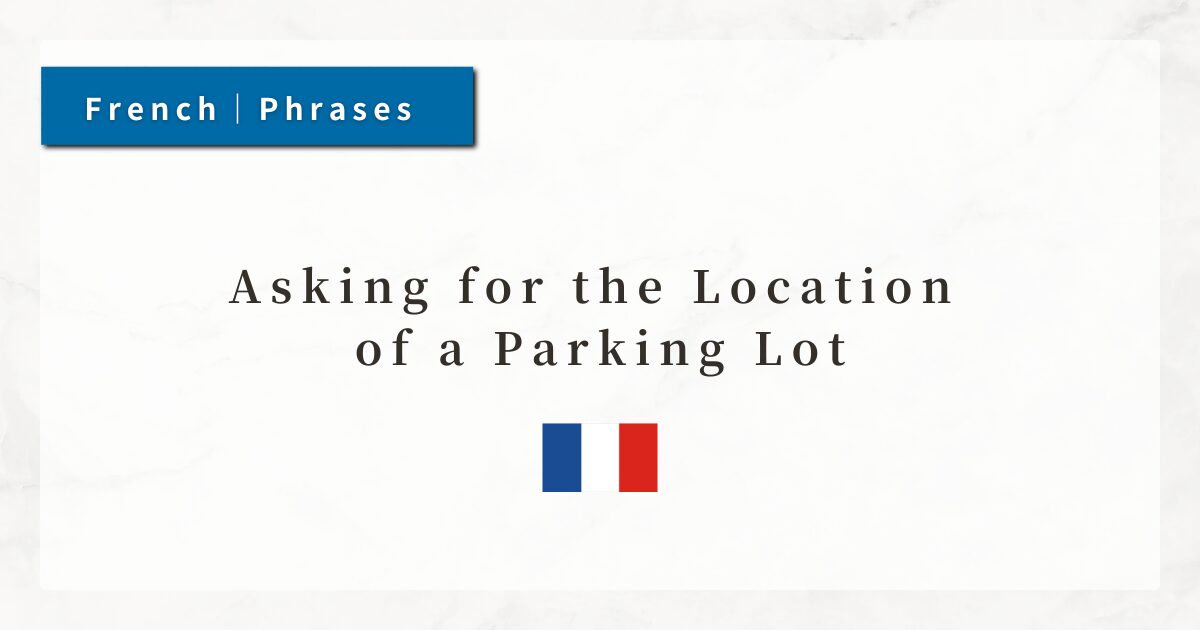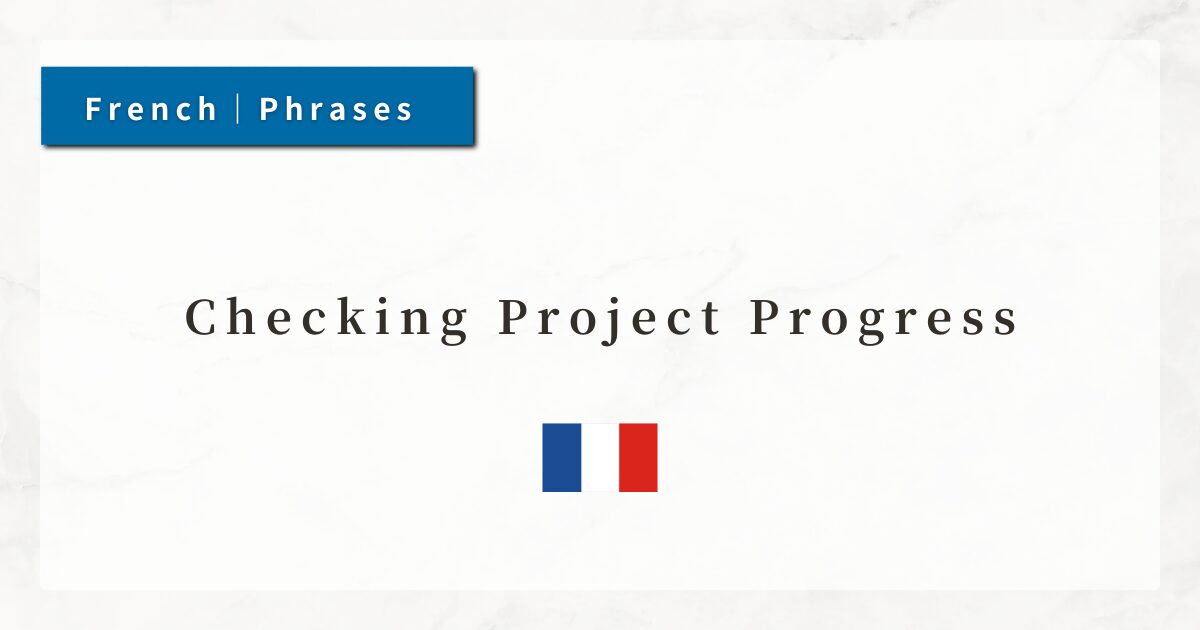#96 Asking for the Location of a Parking Lot|French Daily Life Phrases

When traveling by car, you will often need to ask where the parking lot is located.
If you can ask about the location, entrance, or fees in French, you will be able to move smoothly and avoid unnecessary detours.
In this article, I will explain useful French expressions for asking about parking, using a model dialogue as a reference.
Dialogue

Excusez-moi, où se trouve le parking le plus proche ?
(Excuse me, where is the nearest parking lot?)

Le parking est juste derrière le bâtiment.
(The parking lot is just behind the building.)

Merci. Est-ce qu’il y a une entrée de ce côté ?
(Thank you. Is there an entrance on this side?)

Oui, l’entrée se trouve à gauche, juste après le feu.
(Yes, the entrance is on the left, just after the traffic light.)

Très bien, et le stationnement est-il payant ?
(Alright, and is the parking paid?)

Oui, c’est 2 euros par heure.
(Yes, it’s 2 euros per hour.)

Merci beaucoup pour votre aide.
(Thank you very much for your help.)
1. Asking for the Location of the Parking Lot
The most basic expression for asking where a parking lot is located is:
- Où se trouve le parking le plus proche ?
(Where is the nearest parking lot?)
The phrase “Où se trouve ~ ?” is a standard way to ask for a location and is useful when asking locals or staff members.
A simpler version is:
- Où est le parking ?
(Where is the parking lot?)
This version is shorter and easy to remember, but if you want to sound more polite, Où se trouve ~ is more appropriate.
It is also useful to know related vocabulary, as parking lot types differ depending on the place:
- parking couvert → indoor parking
- parking souterrain → underground parking
- parking gratuit → free parking
- parking payant → paid parking
2. Asking About the Entrance or Access
Sometimes the entrance is located behind a building, or one-way streets make access complicated.
Therefore, in addition to the location, it is helpful to ask where the entrance is.
- Est-ce qu’il y a une entrée de ce côté ?
(Is there an entrance on this side?)
Using “de ce côté” (on this side) allows you to confirm the entrance based on your current position.
Useful directional expressions often used in giving directions:
- à gauche → to the left
- à droite → to the right
- tout droit → straight ahead
- juste après le feu → just after the traffic light
- au coin → at the corner
3. Asking Whether Parking Fees Apply
In urban areas, free parking lots are rare, and most are paid. Checking the fee beforehand will help you park smoothly.
- Le stationnement est-il payant ?
(Is parking paid?)
Since parking fees often vary depending on the duration, it is helpful to confirm the hourly rate as well:
- Combien ça coûte par heure ?
(How much is it per hour?)
4. Asking About Availability
In city centers or popular tourist areas, parking lots frequently become full. If possible, check availability in advance.
- Est-ce qu’il reste des places ?
(Are there any spaces available?)
Here, place refers to a parking space. Using the plural “des places” means “Are there any available spots?”
Common responses include:
- C’est complet.
(It’s full.) - Il reste quelques places.
(There are a few spaces left.)
Summary
- Où se trouve le parking ~ ?
→ Basic expression for asking where a parking lot is. - Est-ce qu’il y a une entrée ~ ?
→ Useful for checking the location of an entrance or access point. - Le stationnement est-il payant ?
→ Allows you to confirm whether parking fees apply. - Est-ce qu’il reste des places ?
→ Used to ask about availability when parking may be crowded.




